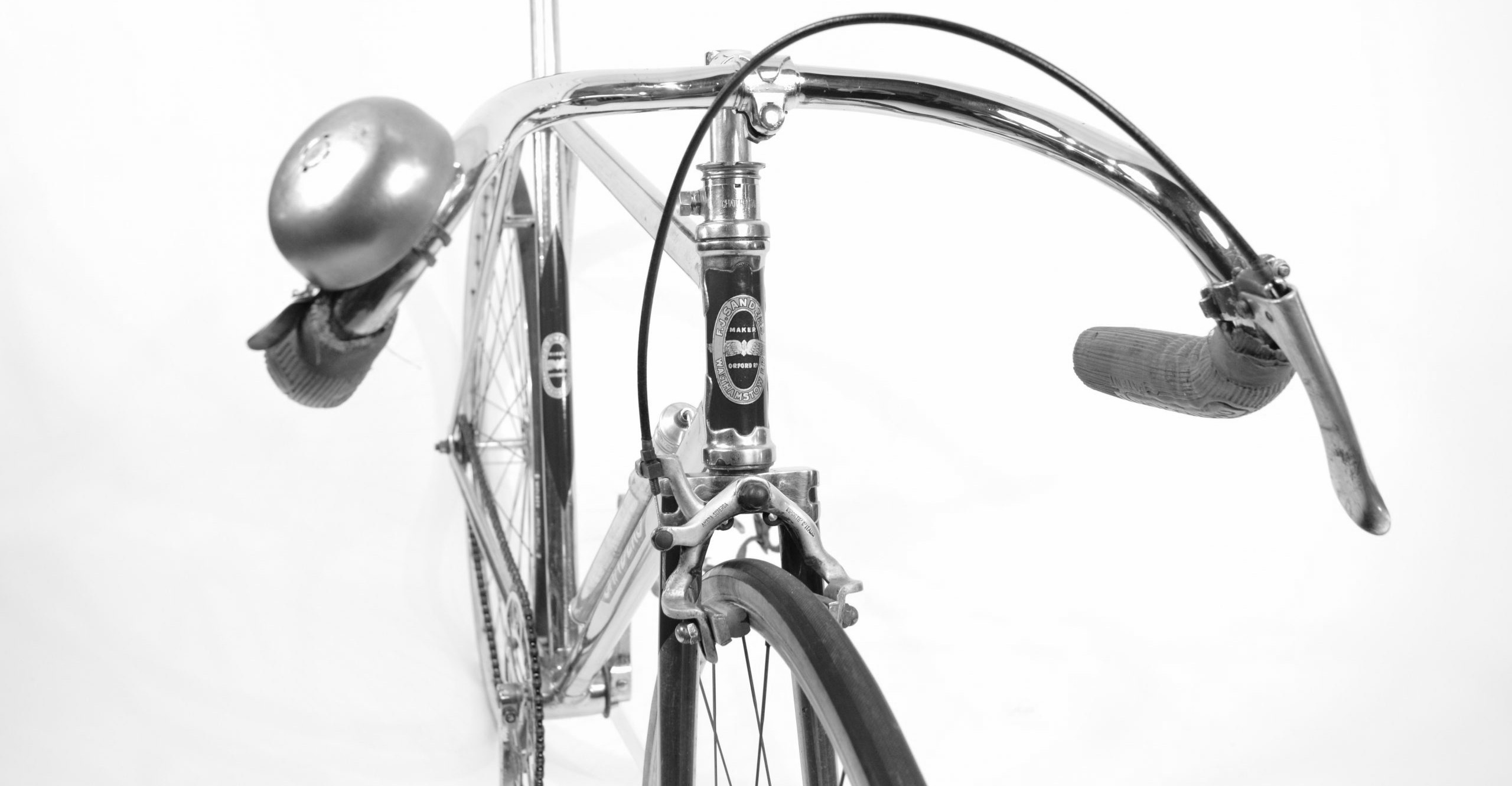South Africa’s Missing Gold: Henry Kaltenbrun and the 1920 Antwerp Olympic Games road race title
Posted: Tuesday 18th August 2020
‘The Great War reduced Rand Roads membership to eight. By 1920 things were looking up again, with a few sparkling unpaced times by Henry Kaltenbrun who did 100 miles in less than five hours: 50 miles in 2 hours 18 minutes and 7 sec and a very fast 25 miler … in 63 mins 46 sec. Kaltenbrun was an obvious selection for the 1920 Olympics in Antwerp.’
(Tom Learmont, Cycling in South Africa, 1990).
The ‘Rand Roads Amateur Cycling Club’ was the premier cycling club in 20th century Johannesburg. The club was established in 1910 with the gold mining magnate, Sir Abe Bailey, elected as its first president. It was modelled on the elite British clubs of the day and was dedicated to the tradition of amateur road time trialling over fixed distances. Throughout its existence up until it was disbanded in the late 20th century, Rand Roads ACC consistently had riders of outstanding ability.
The 1920 Olympics Games held in Antwerp, Belgium, were the first to be organised after the Great War. The last Games had been held eight years previously in Stockholm, Sweden, in 1912. At those the only cycling event to be included was an individual road time trial over 320 kilometres (198.9 miles). The 1912 event was sensationally won by the unknown South African, Rudolph ‘Okey’ Lewis in a time of 10 hours 42 minutes 39 seconds (average speed: 29.9kph/18.6mph). The British star, Freddie Grubb, finished in second place some nine minutes behind with the USA’s Carl Schutte winning the bronze medal. Lewis was a member of Rand Roads ACC at the time and was the only South African cyclist selected to compete at these Olympics.
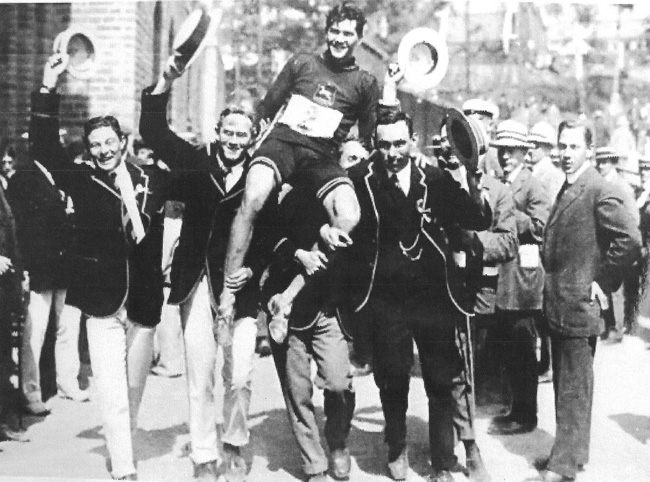
The 1916 Olympic Games, scheduled to be held in Berlin, never took place because of the Great War. The 1914-1918 conflict decimated the ranks of the youth of the nations involved and the 1920 Olympics formed a part of the post-war effort to foster international reconciliation and peace making.
A varied mixture of cycling events had featured in every Olympiad since the first in 1896 and the 1920 Antwerp Games’ cycling schedule, unlike that at Stockholm 1912, included both track and road events. The track programme consisted of four events:
- Match sprint;
- 50km scratch race;
- Tandem sprint; and
- 4,000 metres Team pursuit.
The solitary road event was an individual time trial held over a distance of 175km (108.75 miles).
As in all the previous Games, entry into these events was restricted to male amateur cyclists.
The South African cycling team at the Antwerp Games
Five cyclists were selected to represent South Africa at the 1920 Olympics. Given the existence of an established ‘colour bar’ in the society, those chosen by the exclusively white South African Amateur Athletic and Cycling Association (SAAA&CA) were all white men. The team’s cyclists were Hendrik W. Goosen, Henry J. Kaltenbrun, William R. Smith, George E. Thursfield and James R. Walker.
Goosen and Smith were the senior members of the team, both having won South African national track cycling titles before the war. Smith had been a major rival of Rudolph ‘Okey’ Lewis before WWI. With Lewis having won the 1912 Olympic cycling gold medal, the 1920 South African cycling team had a lot to live up to in Antwerp.
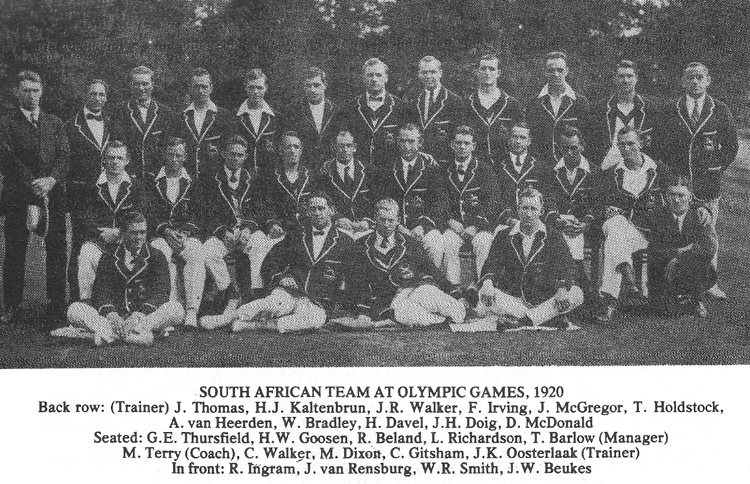
All five of the 1920 team members competed in the Olympic track events and enjoyed several medal successes but missed out on winning a gold medal on the velodrome. In the tandem sprint event, Walker and Smith finished second to the British pairing of Harry Ryan and Thomas Lance while the bronze medal was taken by de Vreng and Ikelaar of the Netherlands. In the team pursuit event the South African team consisting of Goosen, Kaltenbrun, Smith and Walker finished third behind Italy and Great Britain.
The only remaining opportunity for a South African cyclist to win gold at the 1920 Games thus lay in the 175km individual road time trial. The two South African entrants in the event were Henry Kaltenbrun and James Walker. Could either one of them emulate Rudolph Lewis and win the Antwerp road race for South Africa?
The 1920 Olympic road race
A total of 46 riders from 13 different nations were entered in the road time trial race. The course required every competitor to traverse a railway-line level crossing six times during the event. This meant that riders faced the real possibility of being delayed by closed crossing gates occasioned by passing trains.
The star-studded field included the veteran 38-year old British rider, Leon Meredith. He had been a multiple world amateur motor-paced champion before the war as well as a leading time triallist who had finished fourth behind Lewis in the time trial at the 1912 Stockholm Olympics. However, he was to be overshadowed by a new generation of cyclists at the Antwerp Games and finished the race in 18th position.
The riders who set the three fastest actual finishing times for the 175 km event were:
1. Henry Kaltenbrun (South Africa): 4:41:26.6 [Average speed: 37.3kph/23.2mph]
2. Fernand Canteloube (France) 4:42:54.4
3. Harry Stenqvist (Sweden) 4:44:01.8
Kaltenbrun appeared to have decisively won the road race gold medal for South Africa, thus repeating his compatriot Rudolph Lewis’ triumph at the 1912 Games. However, after crossing the finishing line, the Swedish rider Harry Stenqvist lodged an appeal on the grounds that he had been delayed on the course by a closed level crossing gate. The race jury met to consider the Swedish rider’s appeal and accepted his claim of having suffered a delay of four minutes. As a result, four minutes were deducted from Stenqvist’s actual recorded time and he was given a revised official time of 4:40:01.8.
Since Stenqvist’s new corrected time bettered Kaltenbrun’s actual time by 1:24.8 minutes, the Olympic road gold medal was awarded to Stenqvist and Kaltenbrun was relegated to the silver medal position (and Canteloube to the bronze).This demotion came as a bitter blow to Kaltenbrun and the South African camp. Nevertheless, the revised result was confirmed and Stenqvist’s name was inscribed for posterity in the Olympic record books as the winner of the 1920 individual road time trial title.
Kaltenbrun after the 1920 Olympics
After the Games, Kaltenbrun returned home with the rest of the South African Olympic contingent and resumed competing in local events. At the 1921 national track championships held in Cape Town at Easter he won both the half mile and ten mile titles. No national road championships were held during this period.
In the southern hemisphere’s summer of 1921/1922, a SAAA&CA team composed of both athletes and cyclists was invited to tour Australasia. Henry Kaltenbrun and George Thursfield were the two cyclists selected for the tour. They enjoyed considerable success, with Kaltenbrun winning a total of 21 events and Thursfield 13 across Australia and New Zealand.
Back in South Africa in 1923, Kaltenbrun annexed both the one mile and five mile titles at the national track championships held that year in Johannesburg. He retained the one mile title in 1924 at the championships which were staged in the coastal city of Durban. Clearly he remained one of the leading South African cyclists of this era.
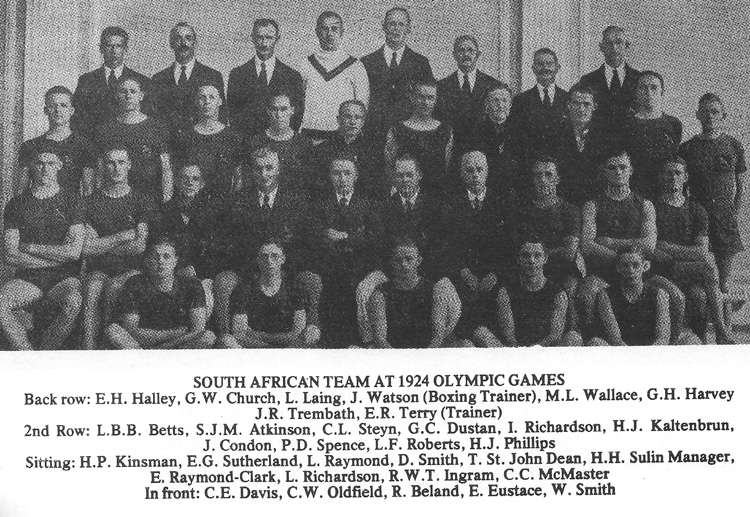
Together with H.J. Phillips, Kaltenbrun was selected to compete in the 1924 Paris Olympics and Kaltenbrun was entered in the Olympic road time trial over 188 kilometres (117 miles). However, he failed to challenge for medal honours and finished in 11th position. The event was won by Armand Blanchonnet of France in 6:20:48.0, with Kaltenbrun’s time being some 20 minutes slower.
Thereafter Henry Kaltenbrun’s name disappears from the cycling record books. He was not selected for the 1928 Amsterdam Olympics in which South Africa’s only entrant in the 168km road time trial, Fred Short, finished 19th. Controversy also surrounded this event when the star British rider, Frank Southall, was placed second after finishing more than eight minutes behind the winner, Henry Hansen of Denmark. The British camp protested that Hansen must have taken a short cut on the course to have gained considerable time on Southall in the closing stages of the race. The British objection was rejected by Olympic officials and Hansen was awarded the gold medal.
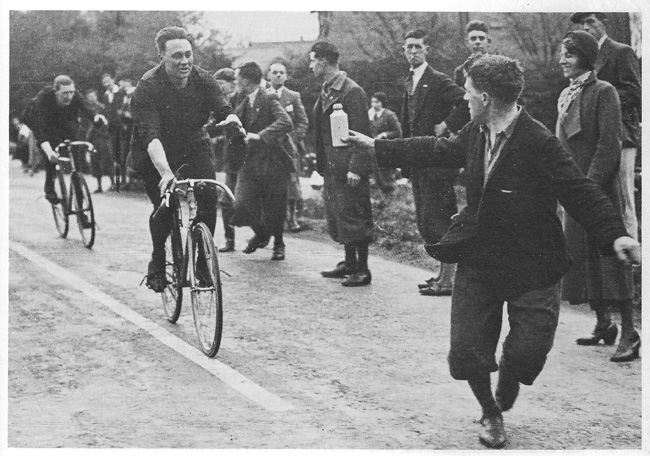
History has not been kind to Henry Kaltenbrun: few photographic images of him survive and leading South African cycling historians have paid him scant attention. He died in 1971, aged 74. Seemingly, the four minutes deducted from his rival Harry Stenqvist’s actual time in the 1920 Olympic road race served to deny Henry Kaltenbrun not only the gold medal at those Games but also the enduring esteem enjoyed by Olympic champions.
References
Bike Cult www.bikecult.com.
Jowett, Walter (1982) Centenary: 100 years of organised South African cycle racing. Pietermaritzburg: South African Cycling Federation.
Learmont, Tom (1990) Cycling in South Africa. Sandton: Media House Publications.
Waters, Geoff (2014) ‘The Life and Times of Rudolph Lewis: 1912 Olympic Gold Medallist’. The Boneshaker, 194, 20, pp. 20-24.
Waters, Geoff. ‘The Cycling Legacy of Leon Meredith, Bastide and the Constrictor Tyre Company’. In ‘Lightweight Extras’. www.classiclightweights.co.uk.
Posted: Tuesday 18th August 2020
This article appears in the following categories.
Upcoming Events
Whether you are looking for a gentle social meet up, or a 100-mile ride browse the community’s upcoming events and plan your next weekend outing.
